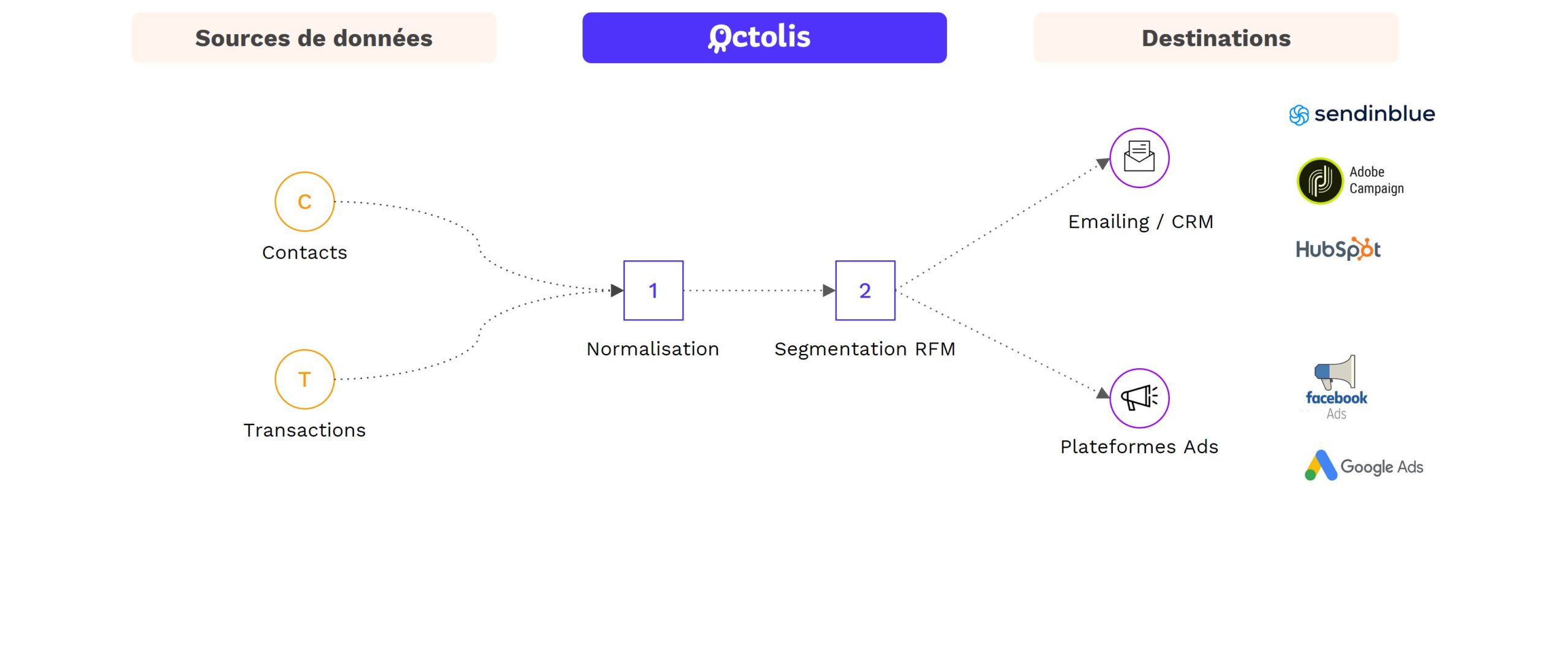RFM segmentation is a powerful tool to segment your customer base according to the recence, frequency and purchase amount.
As part of reactivation of passive customers, it is one of the most used methods to create one or more segments of passive customers. Each segment is then the subject of a personalized reactivation scenario.
For example, we can imagine the following approach:
- Passive “small customers”> simple reactivation scenario with 2 email messages (popular products, promo code, ..)
- Passive “big customers”> Multichannel reactivation scenario with email sending, then Retargeting Google / Facebook Ads, then mail or outgoing telephone call.
Thanks to Octolis, you can easily set up a very flexible RFM segmentation, and synchronize it with your different CRM / Marketing tools.
How RFM segmentation works
RFM segmentation classifies customers according to their individual buying behavior.
Each contact is scored based on 3 criteria:
- R = Recency of last purchase.
- F = Frequency of purchases.
- M = Cumulative amount of purchases.
For each criterion, the contact has a relative score ranging from 1 (low) to 6 (high).
For example, if a contact has R = 1, it means that he or she is part of the 1/6 of the database of customers with the oldest last purchase date.
Next, we combine the F and M ratings into “FxM” to get a two-dimensional rating on which segments are based.
For example, we can define the segment “Best customers become passive” with R IN {1,2} and FxM IN {5,6}.
In theory, with a 2-dimensional scoring, having 6 potential values each, you can build up to 6 x 6 = 36 segments. But in general, there is no point in having more than 10 segments.


